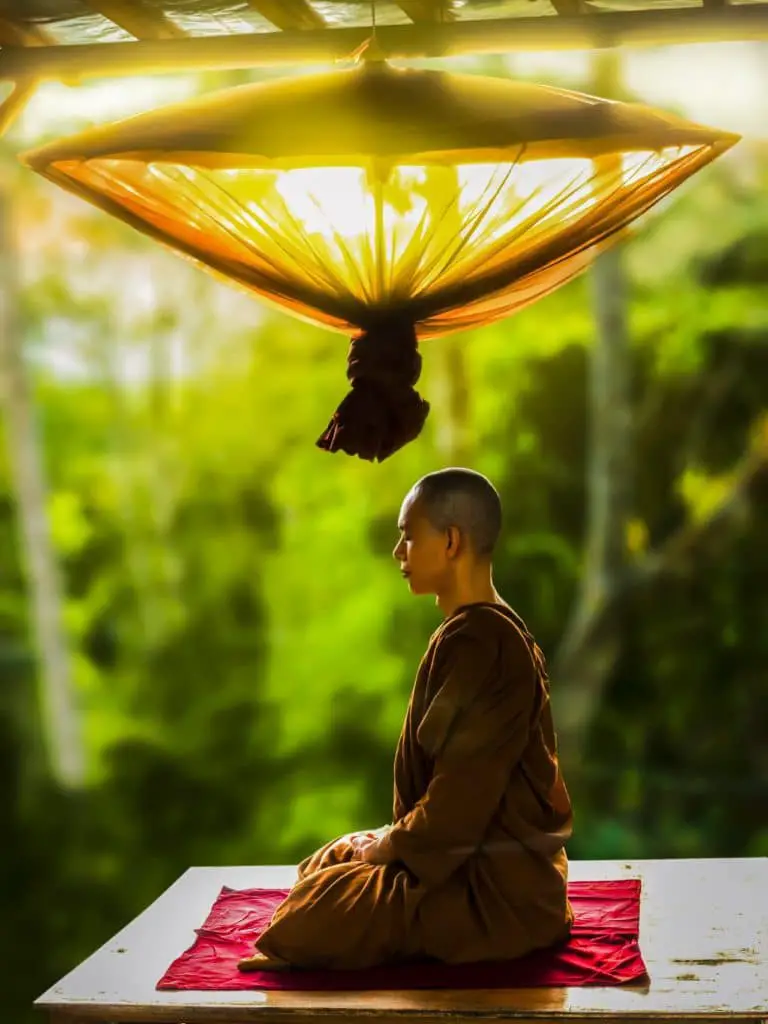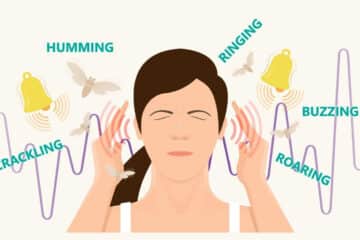What, Why, How, and Benefits of the body scan meditation
Don’t fall asleep
In this article, you will learn all about the infamous body scan meditation. Why do I say ‘infamous’? Because my experience in doing this meditation myself many, many times (both as the meditator and as the teacher), is that many people tend to fall asleep when doing this meditation.

This often leads to hilarious situations when suddenly in the midst of
And that is in accordance with the original purpose of this beautiful exercise: namely to fully relax the body in order to be prepared for further for meditation.
Unfortunately, this aspect is somewhat lost in the modern mindfulness movement. Here, it also used to get to know our physical body and it’s responses. And this without interfering with them.
Read on if you want to learn more about the body scan meditation in the different traditions. At the end, I also include a few different meditations for you to try.
Body scan in the yoga tradition.
- Relaxation is key.
In the yoga class I take in my hometown, a lot of

And then, we have to try to relax even more in the pose. No matter how complicated the pose is.
Always on the lookout for that extra little bit of relaxation that can be had.
And that is not surprising. The original purpose of the yoga poses (or asanas as they are called) is to prepare the body for deep meditation. Actually, all of the asanas can serve as a meditation pose. Yes, even the ones where you stand on your head.
So to be able to meditate in
But aside meditating in complicated poses, there is another reason why relaxation is so often emphasized in relation to meditation. The truth is that most of the time, all strain is hindering deep meditation. I’ll come back on this point later to explain why is it not emphasized at all in the modern mindfulness movement, which will immediately explain the why there are different styles of body scan meditations.
- The body scan in yoga.
So, relaxation is key in yoga and therefore it is the main aim in the body scan meditation. Especially when the body scan is done lying down.
In the yoga course I take, all the muscles are first tensed really hard. Then, when tension is almost unbearable, the muscles are suddenly relaxed.
This is a trick that is used for beginners as they oftentimes cannot relax their muscles at will. Actually, when you train yourself in this exercise for a prolonged time, your muscles will start to relax whenever you place your attention on them.
That is actually the version I often practice and the one I prefer: gradual relaxation by just bringing my attention to the different body parts. But that is an advanced practice.

Once all the muscles have relaxed, we come at a common part that both versions of the body scan meditations have: all the parts of the body are now taken into awareness one by one. It is a common trunk of the practice, but, again, the emphasis is different in both styles. In yoga the emphasis is on, yes you guessed it, relaxation.
It is also partly to get to know the body, but that is far less important as the exercise is done rather quickly. Well, it could be that this is the case since at my yoga studio the teacher always has a lot of exercises prepared and therefore he has little time left at the end of the course :-). In any case, the actual part where you literally scan the body tends to be short as that is not the main aim of the practice.
As the yoga teacher usually lingers a few minutes in this state, usually telling an inspiring story, this is the time people tend to fall asleep. Many people are more or less sleep deprived. Therefore, when they get to this state of relaxation, they fall asleep pretty quickly. It doesn’t stop to amaze me to see how easily people can fall asleep when the yoga teacher leads them into relaxation.
Now let’s have a look and how the body scan meditation is interpreted in the modern mindfulness tradition.
Body scan in the modern mindfulness tradition.
- Getting in touch with your body without interfering
In the modern mindfulness tradition, the

In general, the body scan, when performed in a mindfulness setting, takes much longer than in a yoga setting. Typically a body scan takes 45 minutes. This is a long period to not fall asleep while lying on your back.
In mindfulness, the body scan is used mainly as an exercise in acceptance. In a classical mbsr (*) or mbct(**) training, the body scan meditation is given in the first or the second week. This means that the students are still very much inexperienced. The body scan is used as a tool to hone their attention skills. While at the same time being introduced to the important skill of acceptance.
The most important instruction that is given during the meditation is: do not try to alter your experience in any way.
- The body scan in modern mindfulness.
Typically, the scan is started at the feet. One is instructed to direct one’s attention to the toes of the left foot. The instructions continue and say to feel whatever there is to feel. Do you feel warm, or cold? Feel whatever there is to feel. Whatever you feel is ok. Next, the body is scanned thoroughly. All body parts are given attention.
The instruction to not meddle with the experience, to accept whatever is felt, is key here to the practice of mindfulness meditation as it will be developed further in later stages of the training. This instruction that is at this stage relatively easy to carry out, is the basis to later to be able to accept difficult feelings.
So this practice serves 2 main purposes in mindfulness: first to develop one’s attention skills and secondly to start detaching oneself from whatever it is that we overlay onto reality.
This last topic is really vast, but here it is sufficient to give a small example: let’s suppose you discipline your child and he tells you: ”you are mean”. What do you think? Will you get angry? Most probably not. But if your spouse or husband tells you the same thing, and she or he means it just the same then your child, what are the chances you will remain calm? If you are anything like me, not a lot. This simple example proves that it is neither the words nor the intention or intensity of what is said that makes us angry. It is our own interpretation of the fact. Our own overlay of reality.
However, it is easy to see this in some example, but it is far more complicated to apply this in daily life. That is why we start practicing this in a really easy form during the body scan meditation.
Body Scans for you to try.
I could here give an elaborate description of how to do body scans in the 2 traditions I discussed in this article. However, there is no substitute for a guided meditation. So here are 2 links to guided body scans for you to try. One in each tradition.
- Yoga style body scan
The video hereunder perfectly outlines what I have been saying about yoga with their emphasis on the gradual relaxation of all muscle groups. I recommend the videos of this father and his daughter. They are really excellent. And she, being so young, is incredibly flexible.
The second guided meditation comes from John Kabat Zinn himself. Obviously, here the focus is put one observing whatever arises in the moment, without reacting to it. Acceptance is key, not relaxation.
(*) mbsr: mindfulness based stress reduction. mbsr was developed by John Kabat Zinn to help alleviate people with chronic pain or terminal diseases.
(**) mbct: mindfulness based cognitive therapy. mbct was developed by Segal, Williams and Teasdale in order to help patients with depression.


Hi, I’m Olivier Devroede and I have been meditating seriously since 2009.
Due to the great benefits I have seen in meditating, I decided to become an MBSR trainer myself and start a blog.



1 Comment
Body Scan Meditation – Grow Mindfulness · at 10:02 pm
[…] Devroede, author of the Mindfulness Based Happiness blog, explains that body scan in the yoga tradition is used for relaxation, whereas in some mindfulness […]
Comments are closed.